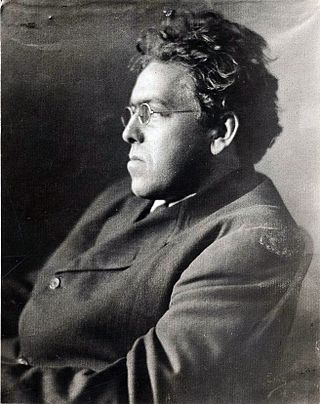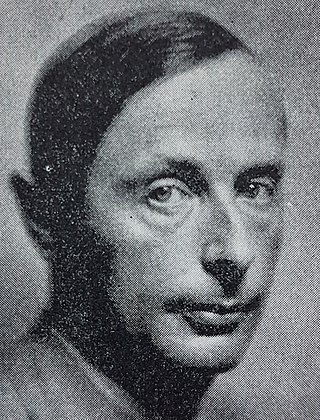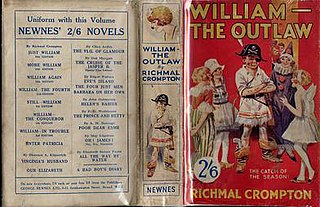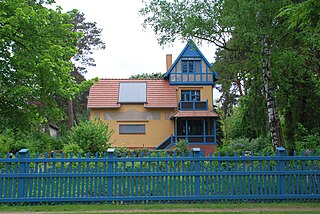
Newell Convers Wyeth, known as N. C. Wyeth, was an American painter and illustrator. He was a student of Howard Pyle and became one of America's most well-known illustrators. Wyeth created more than 3,000 paintings and illustrated 112 books — 25 of them for Scribner's, the Scribner Classics, which is the body of work for which he is best known. The first of these, Treasure Island, was one of his masterpieces and the proceeds paid for his studio. Wyeth was a realist painter at a time when the camera and photography began to compete with his craft. Sometimes seen as melodramatic, his illustrations were designed to be understood quickly. Wyeth, who was both a painter and an illustrator, understood the difference, and said in 1908, "Painting and illustration cannot be mixed—one cannot merge from one into the other."

Alois Carigiet was a Swiss graphic designer, painter, and illustrator. He may be known best for six children's picture books set in the Alps, A Bell for Ursli and its sequels, written by Selina Chönz, and three that he wrote himself. In 1966 he received the inaugural Hans Christian Andersen Medal for children's illustrators.

Théophile Alexandre Steinlen, was a Swiss-born French Art Nouveau painter and printmaker. He was politically engaged and collaborated with anarchist and socialist press.

Charles Edmund Brock was a widely published English painter, line artist and book illustrator, who signed most of his work C. E. Brock. He was the eldest of four artist brothers, including Henry Matthew Brock, also an illustrator.

René Victor Auberjonois was a Swiss post-impressionist painter and one of the leading Swiss artists of the 20th century.

Lee Brown Coye was an American artist.

Per Lasson Krohg was a Norwegian artist. He is best known for the mural he created for the United Nations Security Council Chamber, located in the United Nations headquarters in New York City.
Roger Antoine Duvoisin was a Swiss-born American writer and illustrator best known for children's picture books. He won the 1948 Caldecott Medal for picture books and in 1968 he was a highly commended runner-up for the biennial, international Hans Christian Andersen Award for children's illustrators.

Thomas Henry (1879–1962) was an English illustrator, best remembered for his illustrations of Richmal Crompton's William books.

Fidus was the pseudonym used by German illustrator, painter and publisher Hugo Reinhold Karl Johann Höppener. He was a symbolist artist, whose work directly influenced the psychedelic style of graphic design of the late 1960s.

Dean Cornwell was an American illustrator and muralist. His oil paintings were frequently featured in popular magazines and books as literary illustrations, advertisements, and posters promoting the war effort. Throughout the first half of the 20th century he was a dominant presence in American illustration. At the peak of his popularity he was nicknamed the "Dean of Illustrators".

Albert Lindegger or Lindi was a Swiss painter and illustrator, best known as a political satirist.
Carl Moos, otherwise Karl Franz Moos, was a German and Swiss artist and illustrator, notable for his Art Deco travel and sporting posters, particularly of skiing.

Willy Stöwer was a German artist, illustrator, and author during the Imperial Period. He is best known for nautical paintings and lithographs. Many of his works depict historical maritime events such as the sinking of the RMS Titanic in 1912.
Richard Paul Lohse was a Swiss painter and graphic artist and one of the main representatives of the concrete and constructive art movements.

Franz Karl Basler-Kopp (1879–1937) was a German painter who lived in Switzerland. In addition to works with historic and biblical scenes, symbolic portrayals of the phases of life, he created, most famously, illustrations of legends and fairy tales. He was educated at the Lucerne University of Applied Sciences and Arts.

Karl Aegerter was a prolific Swiss painter, draftsman, etcher, muralist, illustrator, designer and sculptor. Now in numerous private and public collections, Aegerter's works are often likened to those of Edvard Munch.
Karl Schmid was a Swiss artist active from the 1930s to the 1990s. He was a painter, sculptor, engraver, illustrator, graphic designer and teacher.
Gustave Florentin Garraux was a Swiss painter, illustrator and visual artist.
Erich Nelson was a German artist, scientific illustrator, and botanist. He became well-known for his precise and aesthetic aquarelles and illustrations of European orchids, which total more than 2,000. His botanical and mycological author citation is: „E.Nelson“.













